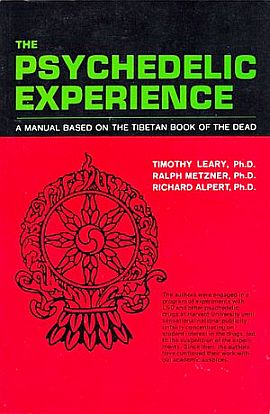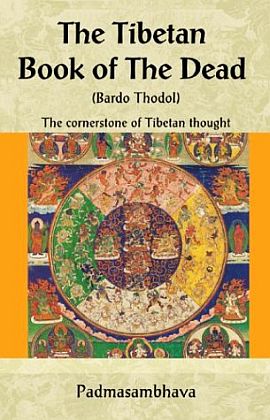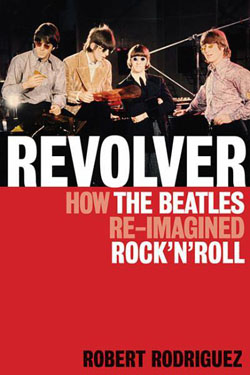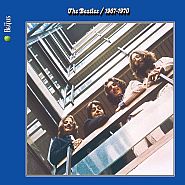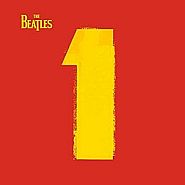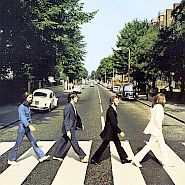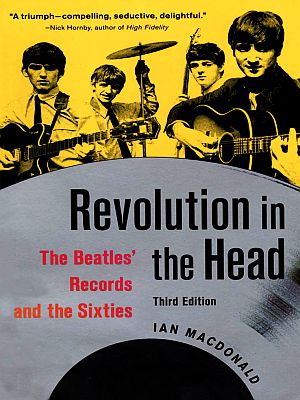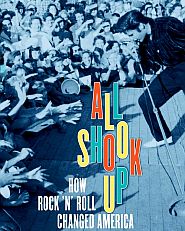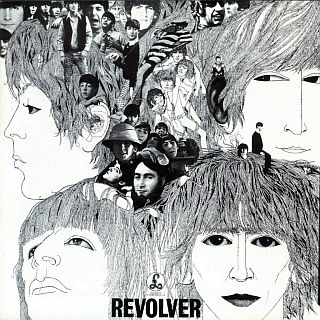
1966: The Beatles’ album “Revolver” ventured into new musical territory with use of the sitar and novel studio effects in “psychedelic” song, “Tomorrow Never Knows.” Click for digital or CD.
Among the 14 songs on Revolver are a number of memorable Beatles tunes, including: “Taxman,” “Eleanor Rigby,” “Here, There and Everywhere,” “Good Day Sunshine,” and “For No One.” But one song on the album – the last one on side two – is titled, “Tomorrow Never Knows.” It is credited as a Lennon–McCartney song, but was written primarily by John Lennon.
The Beatles, with this album, and the one preceding it, Rubber Soul, began venturing into what became known as psychedelic music. And “Tomorrow Never Knows,” in particular, was one of the songs with a sound all its own; a sound that typified the self-discovery, “mind-expanding” reaches of the psychedelic genre. The title for the song, which does not appear in the lyrics, came from a Ringo Starr observation – Starr known occasionally for his twisted expressions, in this case, a malapropism of “tomorrow never comes,” adopted by Lennon for the song’s title. And for this particular tune, “Tomorrow Never Knows” seemed to fit quite well.
Trippy Origins
John Lennon wrote the song in January 1966. His lyrics were adapted from the 1964 book The Psychedelic Experience: A Manual Based on the Tibetan Book of the Dead, by Timothy Leary, Richard Alpert, and Ralph Metzner.
(Timothy Leary a former Harvard professor, had become something of a cultural celebrity for his brash advocacy of LSD. See “Legend of Mind” story at this website for more on Leary and LSD ).
Some have stated that Lennon’s source for the lyrics was the Tibetan Book of the Dead itself, which Lennon reportedly read while under the influence of LSD. But both George Harrison and Paul McCartney stated that the idea for the lyrics came from the Leary-Alpert-Metzner book.
Music Player
“Tomorrow Never Knows”
The Beatles-1966
[ scroll down for lyrics ]
McCartney reported that he and Lennon visited the newly opened Indica bookshop in London. At the time, Lennon was looking in particular for The Portable Nietzsche, but instead found a copy of The Psychedelic Experience.
In that book is the line: “Whenever in doubt, turn off your mind, relax, float downstream,” similar to the lyric heard in the song.
…And LSD
According to some accounts, after Lennon bought the book, he then went home, took LSD, and followed the instructions exactly as stated in the book.
The book held that the “ego death” – experienced under the influence of LSD and other psychedelic drugs – is a shedding of ego, but the process requires a stepwise guidance, outlined in the book.
The Beatles, meanwhile — at least three of them — had already experienced LSD. Reportedly, while in Los Angeles in August of 1965, John, George and Ringo had first ventured into LSD with Peter Fonda and The Byrds. Paul apparently did not partake at the time. So John already had some experience with the drug prior to his 1966 venture in composing “Tomorrow Never Knows.”
|
“Tomorrow Never Knows” Turn off your mind relax and float down stream Lay down all thoughts, surrender to the void, Yet you may see the meaning of within Love is all and love is everyone And ignorance and hate mourn the dead But listen to the colour of your dreams So play the game “Existence” to the end |
Harrison’s View
George Harrison would later offer the following observation about whether Lennon (and others) fully understood the meaning of the song’s lyrics:
You can hear (and I am sure most Beatles fans have) “Tomorrow Never Knows” a lot and not know really what it is about. Basically it is saying what meditation is all about.
The goal of meditation is to go beyond (that is, transcend) waking, sleeping and dreaming. So the song starts out by saying, “Turn off your mind, relax and float downstream, it is not dying.”
Then it says, “Lay down all thoughts, surrender to the void—it is shining. That you may see the meaning of within—it is being.” From birth to death all we ever do is think: we have one thought, we have another thought, another thought, another thought. Even when you are asleep you are having dreams, so there is never a time from birth to death when the mind isn’t always active with thoughts. But you can turn off your mind, and go to the part which Maharishi described as: “Where was your last thought before you thought it?”
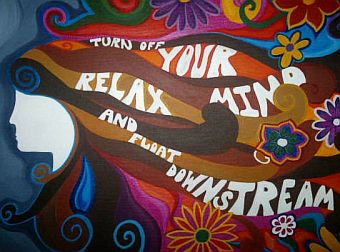
Psychedelic poster art, ‘Tomorrow Never Knows,’ by RedBundle at DeviantArt.com, incorporating first line of Beatles’ 1966 song.
The whole point is that we are the song. The self is coming from a state of pure awareness, from the state of being. All the rest that comes about in the outward manifestation of the physical world. . . is just clutter. The true nature of each soul is pure consciousness. So the song is really about transcending and about the quality of the transcendent.
I am not too sure if John actually fully understood what he was saying. He knew he was onto something when he saw those words and turned them into a song. But to have experienced what the lyrics in that song are actually about? I don’t know if he fully understood it.

1966: John Lennon during recording sessions for the Beatles album, “Revolver.”
Revolver was recorded at EMI Studios, London, with sessions that ran between April and June of 1966. “Tomorrow Never Knows,” was the first track to be recorded – primarily in April 1966 – but became the last song on the album.
The song stands out as totally different from the rest, as there was a good deal of studio experimentation with this song.
One prominent instrument heard in the song is the sitar, which George Harrison had been using after visiting with Ravi Shankar. “Tomorrow Never Knows” is also distinguished by Ringo’s unusual backbeat on the drums – a constant but non-standard tumbling pattern suggested by Paul McCartney for the song.
There were also some novel techniques used in the song’s production such as reverse guitar, and at one point, some of Lennon’s vocals were given an unusual treatment as well.
John Lennon’s instruction to producer George Martin and EMI engineer Geoff Emerick for the production on this song, was that he, Lennon, wanted “to sound as if I’m the Dalai Lama singing from the highest mountain top.” Other accounts, describe Lennon as wanting to sound like a “hundred chanting Tibetan monks.” At one point, Lennon even had the idea of singing the song while spinning on a rope suspended from the studio ceiling to get the effect he wanted. In the end, Lennon’s vocals were run through a rotating Leslie organ speaker to produce the desired effect, the first instance of using that particular technique on a pop recording.Lennon, upon hearing his processed voice in the studio for the first time, exclaimed: “That is bloody marvelous!” McCartney added, “It’s the Dalai Lennon!” (The Beatles would, two years later, take a much publicized trip to India to study meditation ). Tape loops by the Beatles were also used on the song, “mixed in and out of an Indian-based modal backing,” according to one description. Seagulls and various orchestral sounds can also be heard, some of which was played and recorded backwards. The result of all this studio experimentation and novel recording was that the Beatles were moving in a distinctly new direction, taking popular music with them as they went.
Some consider “Tomorrow Never Knows” as one of the Beatles’ greatest songs – or at least one of the most notable in that era. Robert Rodriguez, writing in his 2012 book, Revolver: How The Beatles Re-Imagined Rock ‘N’ Roll, describes “Tomorrow Never Knows” as “the greatest leap into the future” that the Beatles had yet taken, and was on the leading edge of psychedelic music.“…Never had pop swirled quite like this – the sea-gulls, the sitar drone, the sped-up orchestral bits. It was music without edges, all porous borders, one sound bleeding into the next…”
–Pitchfork, 2006 Other musicians and producers agree, some citing it as “the beginning of psychedelia in recorded music.” In the book The 100 Most Influential Musicians of All Time (Gini Gorlinski, ed.), the song is called “hallucinatory hard rock.” In August 2006, Pitchfork, the Chicago-based internet music magazine, ranked “Tomorrow Never Knows” at No. 19 on their list of “The 200 Greatest Songs of the 1960s,” noting:
…Never had pop swirled quite like this– the seagulls, the sitar drone, the sped-up orchestral bits. It was music without edges, all porous borders, one sound bleeding into the next. But it wasn’t some new age drift, either, what with Ringo compensating for all the space in his part by hitting each stutter-stop beat with double force, and the snarling backward lead zigzagging ribbon-like down the rabbit hole. Disorienting contrast is the power of this song– a possible bad trip talk-down…– and explains why it loomed mightily above the nascent psychedelic movement.
Still others date the Beatles entry into psychedelia even earlier, with the preceding album, Rubber Soul, and songs such as “Norwegian Wood,” which also uses the sitar. But “Tomorrow Never Knows” was clearly an innovative leap forward in any case, drawing praise as recently as 2011 from contemporary hip hop artist DJ Spooky, who noted the song’s contribution to sampling. Others have cited it as an early example of the “studio as instrument.” And despite its unusual sound and recording techniques, “Tomorrow Never Knows” has also been covered by a number of artists, ranging from Jimi Hendrix in 1968 and Herbie Hancock in 2010, to Reggae group The Wailing Souls in 1998 and the Portland band Helio Sequence in 2000, among others.
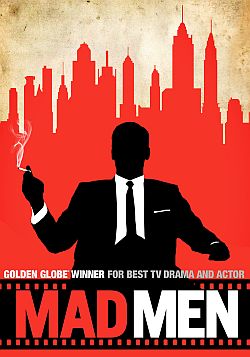
Poster for the TV series “Mad Men,” which follows the drama of those working at a New York advertising agency in the 1960s. Click for box set.
“Tomorrow Never Knows” has also been used recently in one television series. It was featured during the final scene of the 2012 Mad Men episode “Lady Lazarus” (Episode 8, Season 5).
In that episode, Don Draper (John Hamm) – the super advertising guy in the 1960s New York ad agency, Sterling Cooper Draper Price – is given a copy of the Revolver album by his younger wife, Megan (Jessica Pare). Don has complained to Megan about not knowing what is going on in youth and popular culture. Megan responds by bringing him a copy of The Beatles’ Revolver album. She picks out the song “Tomorrow Never Knows,” advising him to “start with this one.”
As Megan leaves for acting class, Don picks up the album sleeve, looks it over a bit, then removes the LP, and plays it. He listens to the music as he sits with a glass of whiskey. As Lennon and the Beatles sing, “You may see the meaning of within…,” the camera cuts to a sequence of scenes of Don’s wife and his co-workers, all caught in moments of uncertainty and transition. Back in his easy chair, Don’s own response to this bit of Beatles’ mind-expanding music is more puzzlement, if not outright disinterest. Less than a minute or so into the song, Don lifts the needle from the recording in mid-play and turns off the player. Seemingly displeased with the sound, lyrics or both, and no more enlightened than he was before about youth culture, Don Draper walks back to his bedroom as the episode ends in silence. The song also played over the closing credits. The episode was watched by 2.29 million viewers during its initial broadcast

2012: “Mad Men’s” Don Draper, in his easy chair at home, listening briefly to the Beatles’ “Tomorrow Never Knows.”
Song Rights
According to the New York Times, the rights to the song for the Mad Men episode cost the producers over $250,000. Beatles songs have been rarely used in TV productions or commercials.
In the late 1980s, the Beatles went to court when Nike used one of their songs in a famous sneaker commercial. In the case of this Mad Men episode, writer/creator Matthew Weiner felt strongly about using the song, and using it in a proper context. In fact, to win the approval of Apple Corps, which administers Beatles song rights, Weiner had to share the episode’s story line with the company. The surviving Beatles, Yoko Ono, and Olivia Harrison, also signed off on the Mad Men usage. As Matthew Weiner explained to the New York Times:
…It was hard, because I had to, writing-wise, commit to the story that I thought was worthy of this incredible opportunity. The thing about that song in particular was, the Beatles are, throughout their intense existence, constantly pushing the envelope, and I really wanted to show how far ahead of the culture they were. That song to me is revolutionary, as is that album.
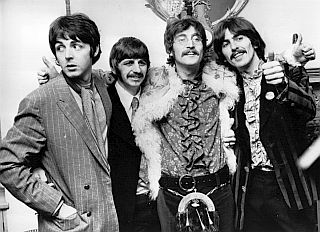
May 19, 1967: The Beatles at a London press conference celebrating the completion of their album, “Sgt Pepper's Lonely Hearts Club Band.”
Psychedelic Sound
Back in 1966 meanwhile, when the Beatles released this song and Revolver, the group was just getting started with innovative music and psychedelic-tinged songs. In the next year, 1967, they produced their much-heralded Sgt Peppers Lonely Hearts Club Band album. And following their 1968 sojourn to India, they would return to London to record the double disc “White Album.”
For more on the Beatles at this website see the Beatles topics page, which includes thumbnails and links to ten other Beatles stories. Additional music stories can be found at the “Annals of Music” page. Thanks for visiting – and if you like what you find here, please make a donation to help support this website. Thank you. – Jack Doyle
|
Please Support Thank You |
____________________________________
Date Posted: 7 February 2015
Last Update: 18 February 2019
Comments to: jackdoyle47@gmail.com
Article Citation:
Jack Doyle, “Tomorrow Never Knows, The Beatles: 1966,”
PopHistoryDig.com, February 7, 2015.
____________________________________
Beatles Music at Amazon.com…
Sources, Links & Additional Information
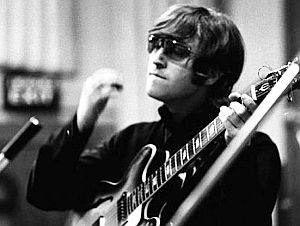 1966: John Lennon in studio during “Revolver” sessions. |
“The Beatles 100 Greatest Songs: No 18. Tomorrow Never Knows,” Rolling Stone, (newsstand edition), November 24, 2010, p. 47, and also at RollingStone.com.
“Tomorrow Never Knows,” Wikipedia.org.
Peter Brown and Steven Gaines, The Love You Make: An Insider’s Story of The Beatles, Methuen Publishing, 1980.
George Harrison, The Beatles Anthology (DVD), Special Features, 1995.
Brian Roylance (editor), The Beatles Anthology, Weidenfeld & Nicolson, October 2000 (1st edition), 368 pp.
Mark Lewisohn, The Complete Beatles Recording Sessions: The Official Story of the Abbey Road Years, 1962–1970, Hamlyn, 2004.
Bill Harry, The Ringo Starr Encyclopedia, Virgin Books, 2004.
Bob Spitz, The Beatles: The Biography, Little, Brown & Company, 2005.
Ian MacDonald, Revolution in the Head: The Beatles’ Records and the Sixties (3rd ed.), Chicago Review Press. 2005.
Pitchfork Staff, “The 200 Greatest Songs of the 1960s: Part Five: #20-1,” Pitchfork.com, August 18, 2006.
Gini Gorlinski (ed.), The 100 Most Influential Musicians of All Time, New York: Rosen Publishing, 2009.
Jacob Turcotte, “John Lennon: Top 6 Most Influential Songs,” Christian Science Monitor, December 8, 2010.
Robert Rodriguez, Revolver: How the Beatles Reimagined Rock’n’Roll, Hal Leonard Corporation, 2012.
Dave Itzkoff and Ben Sisario, “How ‘Mad Men’ Landed the Beatles: All You Need Is Love (and $250,000),” New York Times, May 7, 2012.
John Jurgensen, “How Much ‘Mad Men’ Paid for The Beatles,” Wall Street Journal, May 7, 2012.
“The Beatles Go To 11: Dave Brogan’s Picks,” DirtyImpound.com, April 29, 2013.
Song Review by Richie Unterberger, “Tomorrow Never Knows,” AllMusic.com.
“Revolver (Beatles album),” Wikipedia.org.
John Lennon, The Beatles Anthology (DVD), Episode 7.
____________________________________________________________
Books at Amazon.com…
